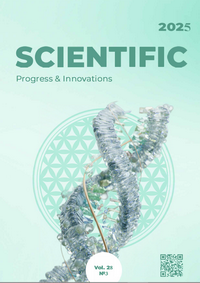Agroecological characteristics of the polyphagous pest complex in wheat agrocenoses
DOI:
https://doi.org/10.31210/spi2025.28.03.20Keywords:
Microtus arvalis, Citellus spp., Scotia spp., Helicoverpa armigera, Autographa gamma, Loxostege sticticalis, Elateridae, Tenebrionidae, integrated plant protectionAbstract
The relevance of the research is determined by the increasing impact of polyphagous pests on wheat agrocenoses in Ukraine, driven by both climate change and the adoption of new agricultural practices. Changes in climatic conditions and landscape structures require the development of new approaches to pest population control to ensure the stability and high productivity of wheat. The aim of this study was to conduct a comprehensive analysis of the agroecological characteristics of the main representatives of the polyphagous pest complex of wheat agrocenoses and their influence on crop yield. The results of the research conducted from 2022 to 2024 indicate that among the polyphagous pests of wheat, the greatest damage is caused by groups such as rodents, leaf-eating and root-feeding moths, grasshoppers, and soil pests. In particular, voles and mice cause harm at the early stages of wheat development by damaging the root system and shoots, which reduces yield. Ground squirrels can cause losses both at the germination stage and during the ear formation. Among the leaf-feeding moths, the cotton bollworm and the gamma moth are the most harmful, actively damaging wheat leaves at all stages of development, which reduces photosynthetic activity and yield. The grass moth also causes damage, but to a lesser extent. Furthermore, locust pests, particularly the locust, have a high potential for mass migration and can inflict substantial damage to large areas. They are especially dangerous in warm and dry seasons. As for soil pests such as click beetles and darkling beetles, their impact on wheat lies in damaging the root system, which also limits plant growth and development. The study also revealed the role of agroecosystems in the distribution of polyphagous pests through the alternation of cultivated and natural biotopes. Overall, the results of the research confirm that effective management of these pest populations requires a comprehensive approach, combining monitoring, agronomic practices, and the use of biological and chemical control methods.
Downloads
Published
How to Cite
Issue
Section
License
Copyright (c) 2025 Scientific Progress & Innovations

This work is licensed under a Creative Commons Attribution 4.0 International License.

 Creative Commons Attribution 4.0 International Licens
Creative Commons Attribution 4.0 International Licens